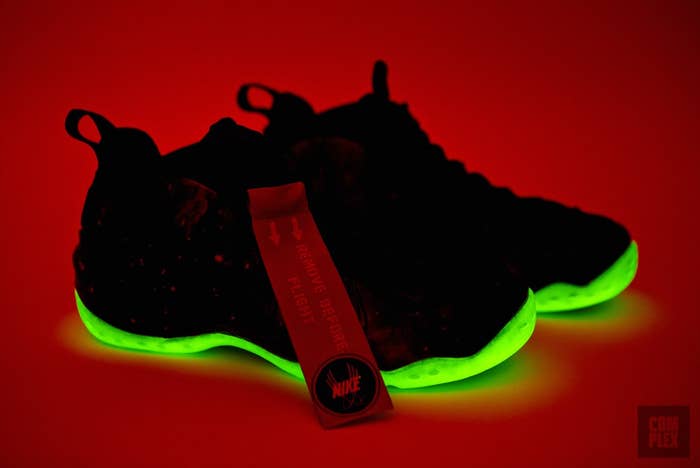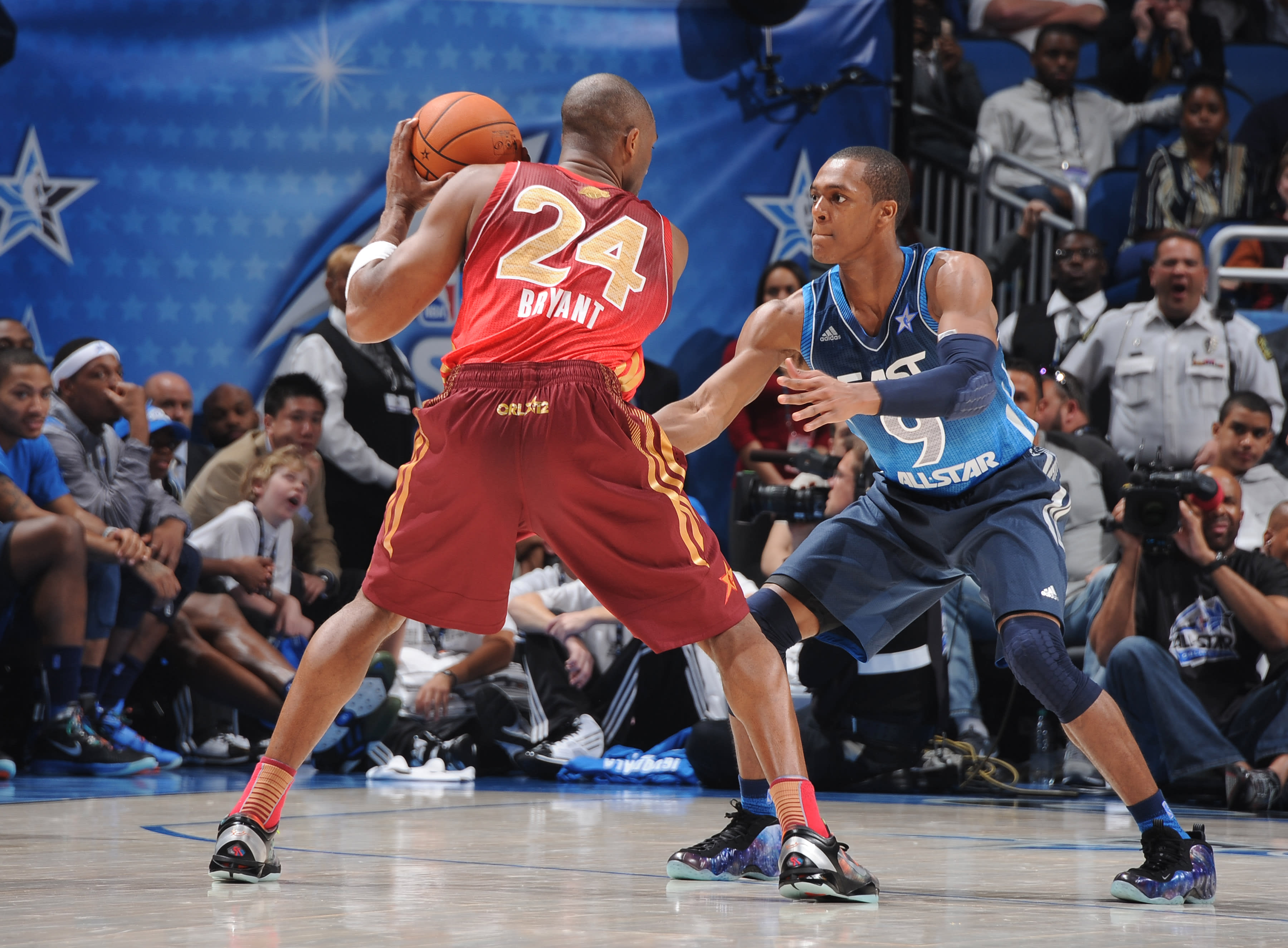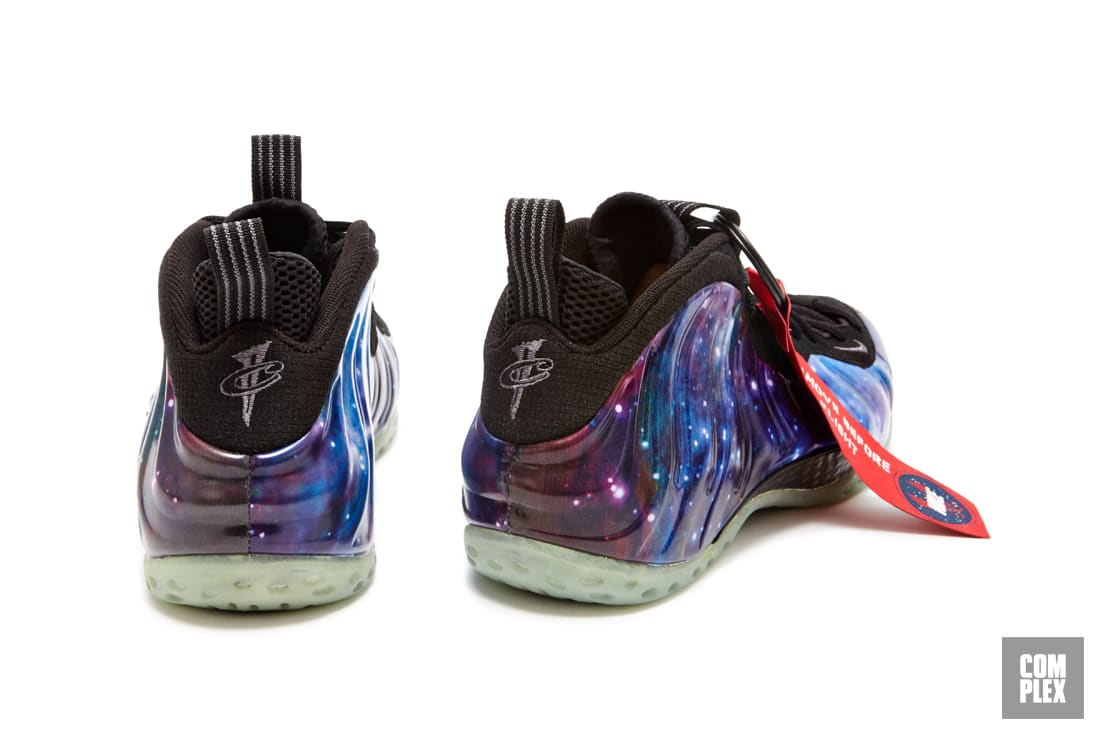
Penny Hardaway never expected his $180 Nike Air Foamposite One sneaker to be the off-court success that it’s become 20 years since its initial release in 1997. “It was interesting because it was something I never seen before, a Foamposite shoe, it was something that no one else had worn or had, but it was comfortable and I liked it,” Hardaway told Complex in an interview. “You can never imagine when your shoe is a good basketball shoe off the court.”
But even with Penny making the shoe a piece of ‘90s basketball lore—he infamously colored in the sneaker’s ridges during a game to meet the NBA’s uniform code standards—there was one pair that elevated the Foamposite into a cultural icon, and it wouldn’t be made until 15 years after Hardaway first wore them on the hardwood. With its star-studded upper and glow-in-the-dark soles, the “Galaxy” would command a level of hype that the sneaker scene had never seen before.
The “Galaxy” Foamposite was the perfect storm for Nike Basketball and sneaker collectors/resellers. The shoe was set to launch during All-Star Weekend five years ago today in Orlando, close to NASA’s headquarters and in the city where Penny played the majority of his NBA career. It was the first printed Foamposite, and it released in the middle of the sneaker’s revival, where every pair was met with massive hype. The remaining pairs would come out in New York City at Foot Locker and Nike’s 21 Mercer store, who announced via Twitter that it would be giving out wristbands for the shoes, which resulted in a line around the block.

“There were literally 600 people lined up on Mercer Street, we had nowhere near that many pairs of the sneakers,” a former 21 Mercer employee told Complex in 2013. “It was crazy, even with the whole staff there to handle the situation. Everyone was really rowdy, but we were trying our hardest to make sure nothing broke out or happened. We had to call the cops and shut down the store for the rest of the day once the wristbands were given out. There were safety issues for the employees, but luckily nothing happened.”
Aside from people willing to trade their car for these shoes, the “Galaxy” Foamposites also brought in the darker side of sneaker culture, aside from the 21 Mercer incident. There was a “riot” outside of a mall in Florida, which was broken up by the police. But the possibility of violence over the sneakers, which retailed for $220, wasn’t only reserved for those who were waiting to buy them; it was also targeted at people who were able to get a pair.
Complex’s own Joe La Puma was able to get a pair of the sneakers and received threats over posting them online. “You're pie, those shoes won’t be on your feet by the end of the night,” one person said on Twitter, while another responded, “Word? Walk outside fuck boy.” According to La Puma, it was the first time he was tangentially threatened over sneakers being posted on social media.

Aside from the unsavory behavior that heightened the profile of the “Galaxy” Foamposites, they also gained notoriety due to their buzz on the secondary market or what people were willing to do to get them in the first place.
There were stories circulating the Internet of how desperate some people were to get the sneakers. Most notably, someone was willing to trade their car, a 1996 Chevrolet Cavalier, for a pair of the Foams in a 10.5 through Craigslist. The seller was willing to get rid of his mode of transportation to acquire the sneakers.
“It was one of the releases where people camped out so far in advance. Pairs got backdoored from Foot Locker, and a lot of the pairs went to resellers who brought them down to Flight Club and flipped them,” says Steven Luna, the Head of Consignment at Flight Club in New York City, who was not working for the store at the time. “It was one of the last Foams that had major hype. It had the Galaxy print and glow-in-the-dark soles and people went crazy for them. I wanted them but, I wasn’t going to wait a week in line.”

The popularity of Foamposites has decreased since 2012, but the “Galaxy” remains one of the few editions that has retained its pearly status in the reselling community, with an average price of $1,500 at Flight Club. “This is one of the only Foamposites that’s maintained resale value for us,” Luna says. “It’s a testament to how dope the shoe was and how limited and hard they were to get.”
The sneakers didn’t come without detractors, though. Method Man called them the ugliest sneakers ever made in a 2012 interview with Sneakerwatch. But it’s the loud color scheme of the shoe—complete with a “Remove Before Flight” flight jacket tab—that made it what it is today. It also came out during a period where there was a renewed interest in sneakers, starting with the “Space Jam” Air Jordan XIs in 2009 and with the “Concord” XIs releasing the year before in 2011. It was the right time, with the Foamposite wave riding so high, for Nike to capture the hype that was circulating in the sneaker scene. Years after the release of the “Galaxy” Foamposite, brands, including Nike, were still trying to make sneakers with the same theme, hoping to catch that they’d catch lightning in a bottle one more time.
When people go to Flight Club today they still look at the shoes in awe, and they bring back memories of when everyone lost their minds over these sneakers. “They remember it,” Luna says. “There’s a story associated with it: for better or worse, it was because it was so elusive.”


